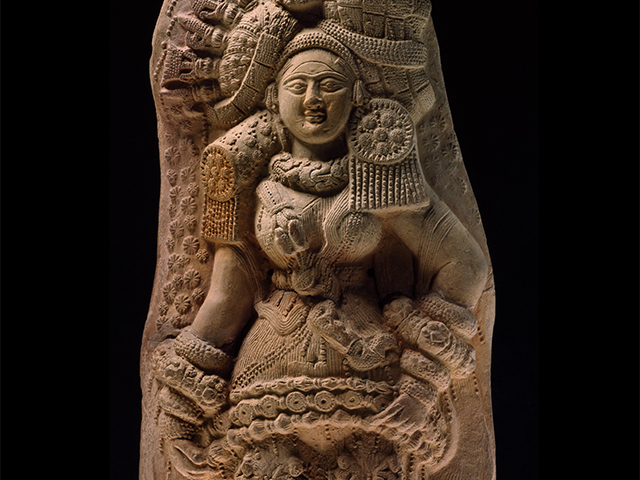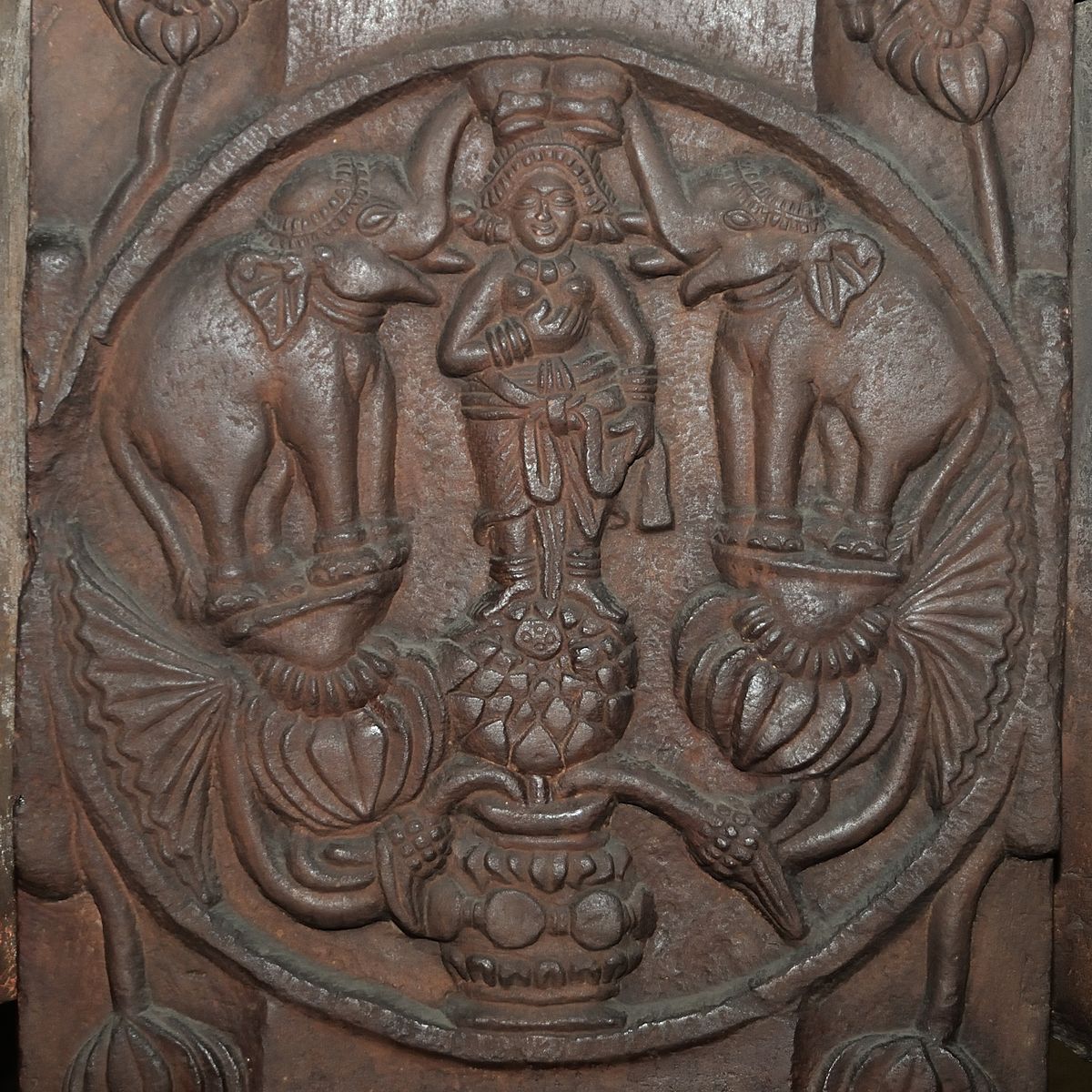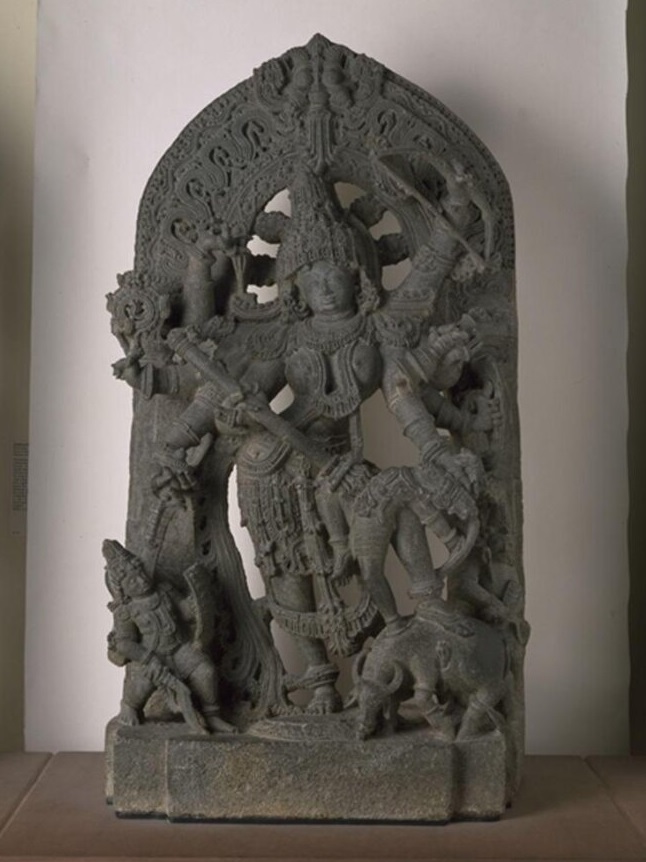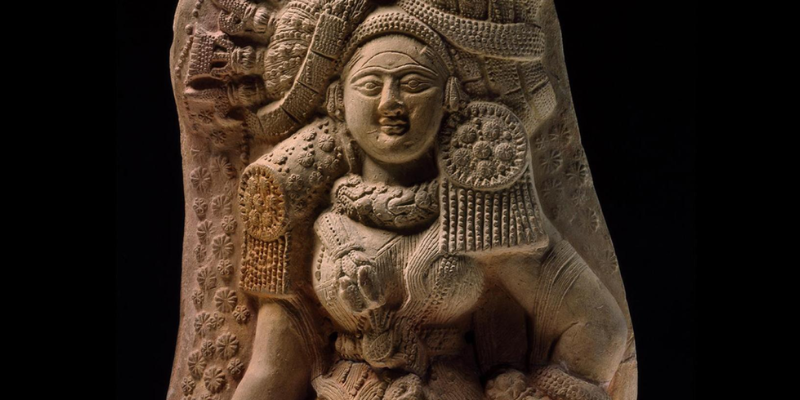In India, we find the worship of the great Mother in varying forms. The Female figures from the Indus civilization indicate the fertility cult. , the early records of terracotta sculpture are the evidence. Since the IInd century A.D. Devi Durga, Lakshmi and Matraka remained popular and worshipped. The goddess on a lion was depicted for the first time in the Kushan Period. Some of the goddesses are the anthropomorphic personification of nature. The Yakshis are the nature goddess. In Folk societies, socialization, education, recreation and communication of new ideas moral values and knowledge are inculcated by the women. They are the active bearers of oral tradition in India.

VARYING FORMS OF WORSHIP OF MOTHER GODDESS
Indian art derives its width and hierarchy, and its special nature that steers clear of the contradictions of realism and abstraction. The Indian artist exults in the visual world with knowledge of its variety, impermanence and changeability; he reacts to it in an internal way, looking for its vital constituents, not its immediate facts.
“Yatr naryastu pujyante ramante tatr devtah” has been rightly said and even depicted in Indian culture through the means of art. In Indian art mother goddess is one of the loving subjects for the artist. In ancient India, we find the worship of the great Mother in varying forms. Terracotta was one of the favourite ageless mediums. For popular religious practices and worship, terracotta served as the most suitable and convenient material for the artist to express their views. “The pot, a symbol of a womb (garbh) represents the Mother goddess in magi co-religious rites and is assimilated into her form as her head and torso in some ancient figurines from northern India.”
.jpg)
The remote examples of Female figures from the Indus civilization (c 2300- 1700) indicate the fertility cult was an important part of its religion. The dancing figure of bronze characterized the involvement of women in art. In these figures, the artist applied minimum modelling. The hand-modelled figures are short and thick.
“The goddess has dual existence, to be worshipped in her own right as an independent deity and as an adjunct to a central male deity, where she is shakti, the essential of female energy that serves as the personification of a god’s energy.” Since the IInd century A.D. Devi Durga, Lakshmi and Matraka have remained popular. The typical iconography of snake deities could be seen in stylized form. The nude Goddess Lajja Gauri is seated in uttanpad posture and is depicted at Andhra Pradesh, Karnataka, Gujrat and Maharashtra. She is also incarnated with the vahan of bull at Bhinmal of Rajasthan and Vadgaon of Maharashtra. Shri Lakshmi is elevated as the goddess of wealth, fortune and prosperity.
Gaj Lakshmi is very common in Hindu and Buddhist Iconography. In the medallion of stone from Bharut 100-80 BCE two elephants are pouring water over the goddess Lakshmi, the figures are standing or seated cross-legged on a lotus. On the eastern Gateway of Sanchi, the Goddess is being depicted in a seated posture representing the abundance and wealth of nature. In the Kailash temple of Ellora the carved image of Lakshmi is illustrated seated in a lotus pond, the two elephants are holding the pots in their uplifted trunks. Lakshmi is one of the earliest deities represented by the Indian artist. (Bhartkalyan) The word Lakshmi is derived from the term lakshna which means sign, symbol, or lucky mark. Her four arms symbolize the four goals of Humanity-Dharma, arth, karma and moksha. The elephants are the symbol of strength and the ghat of water symbolizes the fertility for prosperity.
The worship of the goddess is in a multitude of forms- Ambika is the tender mother, and Devi Tara is a source of light. Durga is the goddess of Shakti or Power while Saraswati is the devi of Gyan Kali has the supreme power of destruction. The Indian artist captured the various facets of women in his art. The goddess Durga killing the buffalo demon is portrayed as the sixteen–armed figure holding in her left hand a shield, bow, mirror, noose and bell. In her right-hand sword, arrow, chakra, chisel, hammer, thunderbolt, and elephant goad. 12 Century Pal period sculpture is one of the most beautiful examples of eastern India.
Durga slaying Mahishasur is a prominent theme for Indian artists. In another sculpture of the Hoyasal period, the goddess is in an armed form with the weapons lent by the male gods.
![The Dancing Girl of Mohenjo-daro, a famous bronze figurine from the Indus Valley Civilization, 2300-1750 BC [640x880] : r/ArtefactPorn](https://i.redd.it/xt8y39qhlj191.jpg)


In the Kushan Period, the goddess of a lion was depicted for the first time. She appeared as a supreme warrior-goddess in Bramhical culture. In various caves and temples of India, this theme is being sculpted. Mammalpuram, Ellora, Virupaksha are some of them. In India, the deities are generally portrayed with many arms to emphasize their ability and omnipotence. The prescription of Vishnudharmottar Purana describes the casting of the image. The depiction of Durga could also be seen in Pahari miniature paintings, in miniature paintings.
The hand-modelled and stumpy female figure bird-faced is also found in Patliputra and Mathura. The ornaments and headdress of the figure are full of floral designs. In Bharut, Sanchi and Mathura the figures of Shalbhanjika appear. Yakshis are the nature goddesses; the early records of terracotta sculpture are the evidence. Ambica – A Jain goddess is the yakshi with a smiling face that reflects maternal compassion. Loin is her vahana. Yoginis are the minor goddesses with power and magical powers. The Chousath Yogini temple of the 10th Century is a famous temple of Khajuraho, Madhya Pradesh. In eastern India Shitala Mata is worshipped she is the goddess of smallpox.
Some of the goddesses are the anthropomorphic personification of nature. Rivers, sea, morning and evening are named as deities. Goddess River Ganga, Yamuna and Saraswati are engraved at rock cut shrine of Ellora. Ganga and Yamuna are represented in human form with their vahans. These two river goddesses conventionally flank a temple doorway. In many miniature paintings, the artist depicted the personification of morning as Usha and the evening as Sandhya. Ragini in the feminine form is also installed as a favourite subject of artists of the mediaeval period.
“In traditional society, art is an integral part of living. Folk art is functional and spontaneous. It also reflects the constancy of belongingness. In the primitive societies, there was no real distinction between fine art and applied art.
In folk societies, socialization, education, recreation and communication of new ideas moral values and knowledge are inculcated by the women. They are the main carriers of oral tradition. The essential development in folk society remains due to the folk traditions. Women incorporate the traditions through songs, tales and art. They are the active bearers of oral tradition in India.
In Indian culture, the creator or the originator has been depicted as God or Goddess. As the woman originates life or creates the life-like ‘Brahma’ nurtures the child-like ‘Vishnu’ and destroys the evils for the protection of the child-like ‘Shiva’.

She gets satisfied with less and tries to give more to her family. She even takes the ‘Rudra roop’ to get rid of evils. She plays a vital role in the entire of her life, the role of daughter, sister, friend, mother and wife. Her vivid role gives her the status of “Devi”.
Read Also:
Telangana Art Fest, a Sparkling Showcase of Arts and Music in Hyderabad

Contributor





